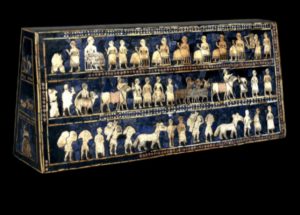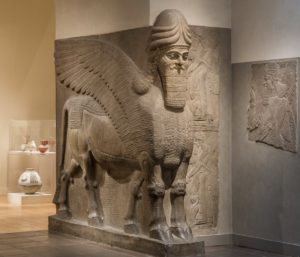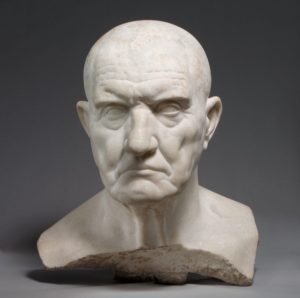In this unit of the Ancient World we viewed and discussed art from different ancient civilizations. These civilizations were ancient Egypt, Mesopotamia, Greek, and Roman art. Although these civilization’s had different cultures their art had some similarities, and of course differences as well.
In Mesopotamian art one can often see a depiction of hierarchy. For example in class we went over the Standard of Ur 600-2400 B.C.E. which is like wooden box whose purpose is unclear. The Standard of Ur however is divided into registers which are horizontal divisions. At the lower registers one can see people of the working class possibly servants carrying items and herding animals. Through this piece of art we can infer agriculture was a part of the culture as well as trading which can be inferred through the different rocks found in it. At the top register we see the king which is way larger in scale compared to the rest of the people thus showing hierarchy and the significance of the king and emphasizing power.

In Egyptian art they placed a great value on divine/supernatural beings. Most being Gods. These Gods were often depicted as half human half animal. For example Horus the sky god son of Isis and Osiris, who has a falcons head and human body. Egyptians also dealt a lot with the afterlife mummifying their dead and leaving treasures in there pyramids (specifically Kings and Queens). There are also various symbols and hieroglyphics. A similarity between Egyptian art and Mesopotamian is the resemblance of hierarchy but also the use of half human half animal statues, for example the Egyptians Sphinx and the Mesopotamian Lamassu which has the head of a man body of a bull or lion and wings of an eagle.


Lastly we went over Greek and Roman art. As stated in a previous post “Humanism is a philosophical system that highlights the importance and value of human beings rather than divine/supernatural matters. It has various characteristics. First it sought rational thinking, to look for explanations in the natural world. Thus encouraging the use of critical thinking leaving space for new speculations. It also placed human beings in the center of moral and social concerns. In terms of art it focused on the beauty of humans mainly man. It did this through the use of nudity in art.” (Blog post 7: Humanism) Both Greek and Romans focused on Humanism however most Roman sculptures had some sort of item of clothing. Greeks also mainly had nude statues of young males with athletic bodies and rarely used females nudes unless it was Aphrodite. Another difference between the Greek and Roman was the fact that Romans depicted aging and facial hair as opposed to Greeks. Contrapposto “an asymmetrical arrangement of the human figure in which the line of the arms and shoulders contrasts with while balancing those of the hips and legs.” (google definition) was a similarity they shared that differed from the Egyptians whose sculptures were often straight in posture and lean in muscle while Greek-Roman art highlighted the male body.


Overall this Unit was very informative on the Ancient Worlds art. It helped me make connections between the different civilizations and learn about new art terms and ideas like humanism and contrapposto.

